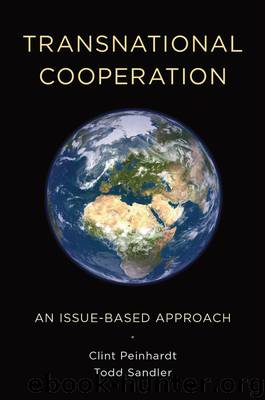Transnational Cooperation by Clint Peinhardt & Todd Sandler

Author:Clint Peinhardt & Todd Sandler
Language: eng
Format: epub
Publisher: Oxford University Press
Published: 2015-07-02T17:41:00+00:00
RTA summary
Regional trade cooperation can clearly achieve economic gains for partner countries: if this is the primary motivation, then RTAs should be priorities for big economies that have much to gain from increased levels of trade. However, it should be clear from this overview that RTAs often appear for noneconomic reasons, including broader foreign policy objectives. As such, many of the countries that might benefit most from RTAs are not currently partners in them. The United States has treaties with Bahrain, Israel, and Oman, all of which are small economies that offer few gains to the American economy. The United States does not have an RTA with China, India, or Brazil, economies that would greatly enhance American exports. Arguments that RTAs are simply trade liberalization in another form, or that they will ultimately produce the same result as liberalization via the WTO (for example, Baldwin, 1993) seem far-fetched given these geopolitical realities. From the origin of RTAs, they have circumvented multilateral efforts—the formation of the EEC clearly violated GATT requirements for free trade areas, because West Germany’s average tariff on goods from countries outside the community nearly doubled as a consequence of its membership. U.S.-dominated GATT allowed the EEC to form because it supported other Cold War goals, such as rebuilding Western European countries as capitalist democracies.
From the EEC forward, each new RTA has provoked concerns among nonmembers about negative repercussions for previously established trading relationships. In response, excluded countries often form another RTA in order to either keep access to the markets in question or to promote alternative opportunities for their exporters. This “domino theory” of RTAs explains the timing of many efforts at regional trade cooperation, including the formation of the EFTA (in response to the EEC), the first U.S. RTA (with Israel, which had just signed a similar deal with the EEC), and enhanced trade liberalization in ASEAN as a response to alternative regional agreements. This primarily defensive proliferation of trade agreements again suggests that trade creation is often a second-order objective and many potential gains from trade cooperation therefore remain unrealized.
RTAs can also impact multilateral negotiations negatively. With the creation of NAFTA (1993) and the EU (1992), the United States and Europe demonstrated that they had solid economic opportunities outside GATT, and they effectively increased their bargaining power in the Uruguay Round (Stone, 2011). As a result, the final agreement not only created the WTO but also included many provisions that disproportionately helped American and European exporters, including the General Agreement on Trade in Services (GATS) and Trade-Related Intellectual Property Rights (TRIPS). If regional trade cooperation aims primarily to strengthen the hand of powerful countries at the WTO, then it is clearly working at odds with multilateral trade liberalization.
Download
This site does not store any files on its server. We only index and link to content provided by other sites. Please contact the content providers to delete copyright contents if any and email us, we'll remove relevant links or contents immediately.
The Secret History by Donna Tartt(16670)
The Social Justice Warrior Handbook by Lisa De Pasquale(11495)
Thirteen Reasons Why by Jay Asher(7805)
This Is How You Lose Her by Junot Diaz(5802)
Weapons of Math Destruction by Cathy O'Neil(5050)
Zero to One by Peter Thiel(4839)
The Myth of the Strong Leader by Archie Brown(4796)
Promise Me, Dad by Joe Biden(4459)
Beartown by Fredrik Backman(4437)
Stone's Rules by Roger Stone(4425)
How Democracies Die by Steven Levitsky & Daniel Ziblatt(4421)
The Fire Next Time by James Baldwin(4352)
100 Deadly Skills by Clint Emerson(4089)
A Higher Loyalty: Truth, Lies, and Leadership by James Comey(4043)
Rise and Kill First by Ronen Bergman(4026)
The David Icke Guide to the Global Conspiracy (and how to end it) by David Icke(3897)
The Farm by Tom Rob Smith(3880)
Secrecy World by Jake Bernstein(3791)
The Doomsday Machine by Daniel Ellsberg(3741)
